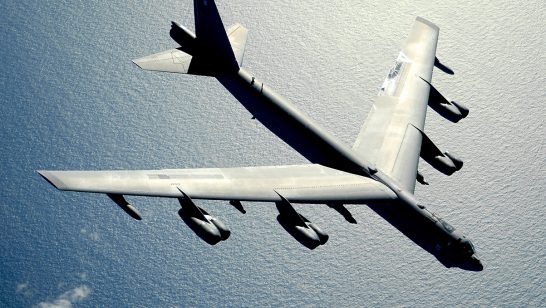
Since September 2009, the Obama administration has been pushing one missile defense plan for Europe with two distinct missions: first, to protect Europe, and second to defend the United States, both from Iranian missile attack. NATO endorsed this plan in May 2012. Now, almost four years into the effort, it is time to recognize how fundamentally different those missions are, and to pursue them on separate tracks.
The administration’s European Phased Adaptive Approach (EPAA) to missile defense has four phases, each with more capable interceptor missiles to keep pace with an evolving Iranian missile program. Phase one, with SM-3 IA short-range interceptors based on US Navy ships and a radar in Turkey, is already deployed in the Mediterranean. Phases two and three, with more-advanced SM-3 interceptors based in Romania (2015) and Poland (2018), are planned to handle medium and intermediate-range missile threats to Europe. These phases appear to be on track.
Phase four, however, is different. The SM-3 IIB interceptor, planned for Poland, is intended to defend the United States—not Europe—from an Iranian long-range missile threat that does not yet exist, and is progressing more slowly than many had feared. The SM-3 IIB is planned to be bigger and faster then its predecessors, an SM-3 missile on steroids. But it’s already behind schedule. Originally planned for 2020, phase four has been pushed back to 2022 at the earliest.
Now, a new US congressionally-sponsored study based on classified technical reports has found that this system may not be effective and that “modifications are needed” to its operational plan and where it would be based. Those changes could lead to significant safety risks, cost increases, and schedule delays.
Conducted by the Government Accountability Office (GAO), a nonpartisan investigative arm of Congress, the Feb. 11 study revealed that the Missile Defense Agency (MDA)’s own technical analysis found that forward deploying SM-3 IIBs in Poland “may require the development of the ability to launch the interceptor earlier,” while the attacking missile’s engines are still firing, “to be useful for US homeland defense.”
This may sound simple, but its not. Attempting to intercept a missile just after “boost phase,” known as “early intercept,” is controversial even within the Pentagon’s MDA, which found in 2010 that it “was not a desirable capability” because it reduces the effective range of the missile. A 2012 MDA assessment found this concept was “feasible,” but would require modifying the SM-3 IIB interceptor, command and control systems, and space-based sensors.
Outside of MDA, early intercept is seen as impractical. In a September 2011 report, the Defense Science Board, an advisory group to the Pentagon, concluded that early intercept “is not a useful objective for missile defense in general or for any particular missile defense system,” because interceptors would not be able to reach the target quickly enough. Similarly, a September 2012 report by the National Academy of Sciences found that “even in the best of cases” early intercept does not happen early enough to prevent warheads and decoys from being deployed.
To avoid basing in Poland and the need for early intercept, MDA analysis suggests that basing the interceptors on ships in the North Sea “is a better location” for defending the United States. However, GAO found this option could have “significant safety risks” and “unknown, but likely substantial, cost implications.”
As for safety, the SM-3 IIB may use a hazardous liquid propellant, which would increase speed and agility. The Navy, however, which would deploy the missiles on its Aegis-equipped ships, banned missiles with liquid fuel in 1988 due to fire hazard concerns. The Navy has not overturned this ban.
As for cost, the SM-3 IIB may need a 27-inch diameter booster, as opposed to the 21-inch diameter of other, slower SM-3 versions. This would be a significant cost issue for the Navy, which would have to outfit its ships with wider launchers. Moreover, a dedicated North Sea deployment would also require the Navy to commit more ships to the program than planned.
In addition, the NAS study found that interceptors based in Europe would require a velocity greater than 5 kilometers per second “to avoid being overflown by modestly lofted threats to the US East Coast,” and that such a high speed could not be achieved with a 21-inch diameter missile. But the Academy recommended against fielding such speedy interceptors in Europe as they would also be able to intercept Russian western-based Intercontinental Ballistic Missiles, and would “clearly exacerbate political tensions in the region.”
Meanwhile, in his Feb. 12 State of the Union address, President Obama announced he will renew efforts to seek a second round of nuclear arms reduction talks with Russia, reportedly aiming to cut US forces by about one third. Russia responded that it was ready to consider new proposals, but that US-Russian disagreements over missile defense must be resolved first.
According to diplomatic sources, Russia wants the United States to cancel phase four in Europe as a condition for arms reduction talks to proceed. The United States needs Russian cooperation on arms control, but it does not need phase four. Not only does the SM-3 IIB have major unresolved technical problems, but the United States has other options to defend itself against future Iranian long-range missiles, should they appear, that are less objectionable to Russia. For example, Washington has an existing, albeit limited, missile defense system in Alaska and California, and Republicans in Congress are calling for a new missile defense deployment site on the East Coast.
The first three phases of European missile defense can continue, but phase four should not. Cancelling plans for the SM-3 IIB in Europe would have tremendous benefits for the United States and NATO. Both would benefit from US-Russian nuclear arsenal reductions, in terms of increasing their security, saving money, and gaining more leverage against the spread of nuclear weapons to terrorists and additional nations. The United States already has a defense against long-range missiles, and phase four is not meant to protect NATO. And, as GAO has shown, the technology, cost and schedule are dubious in any case. It is time to weed out phase four and let the prospects for US-Russian arms reductions grow.
The opinions articulated above represent the views of the author(s), and do not necessarily reflect the position of the European Leadership Network or any of its members. The ELN’s aim is to encourage debates that will help develop Europe’s capacity to address the pressing foreign, defence, and security challenges of our time.


